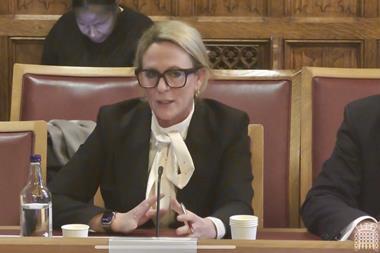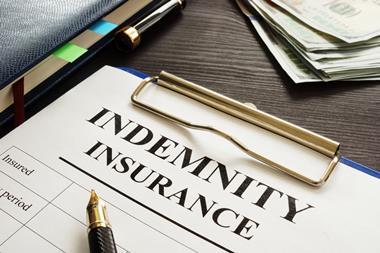Phil Grace reveals the threat posed by new EU noise laws - and how brokers can advise firms to keep on the right side of them
It might have been all right for 70s glam rockers Slade to suggest we come on and "feel the noize" but, for about 170,000 people in the UK, it's no joke.
For it's that number who, it is estimated, suffer deafness, tinnitus or related ear conditions as a result of too much noise at work.
Such is the problem, an EU directive - effective from April next year - will lower the threshold of how many decibels are considered acceptable in the workplace.
Under existing health and safety legislation, businesses issued with improvement notices for noise can end up in court if they don't comply, so they need to take action now.
The Health and Safety Executive is currently sponsoring the Stop That Noise awareness week, which runs until 28 October. This aims to help businesses understand how to meet the new Control of Noise at Work Regulations 2005 and prevent occupational, noise-induced hearing loss.
This condition is counted as an occupational disease because, similar to other workplace diseases, it develops gradually.
What makes deafness problematic for employers is the difficulty in detecting it among their staff, as it will only manifest itself tens of years later. When combined with age-related deafness, the condition can be severely debilitating.
Occupational deafness claims first arose in the 80s and 90s, 20 years after the so-called "date of knowledge", whereby the courts recognised the liability of companies for hearing loss among staff.
Many of the heavy industries directly affected by this, such as shipbuilding and iron and steel making, are either in decline or have already disappeared and claims have dwindled in the past decade.
For brokers and many of their clients doing business outside these traditional industries, noise has hitherto not been a problem. But the new law is likely to bring such companies, and the levels of noise they generate, within its remit.
These businesses will have more to do under the law, as their counterparts in heavier - and noisier - industries have long been familiar with the issue and the methods of measurement to counter it.
So, from light engineering firms, through on-site service engineers to bar staff working in nightclubs, there is a whole new set of people protected by the legislation.
Brokers need to bring these changes to the attention of all their clients. The companies with existing knowledge have a head start, but need to check their current noise levels and continue with noise reduction measures.
Assessing levels
Firms new to the problem need to be aware that handing out earplugs to staff is not a comprehensive solution.
To comply with the regulations, noise needs to be controlled at source. Once levels have been reduced, it may not be necessary to provide personal protection.
As a first step to assessing noise levels, employers should test whether or not you can conduct a conversation at two metres' distance without raising your voice. Though somewhat unscientific, it is an indicative starting point.
Taking investigation a step further, most machinery noise levels can be identified from the manufacturers' technical literature.
One caveat, however, is that the stated levels may refer to machines in 'idle' mode - in other words, when not working at full power.
For example, the sound levels created by a woodworking machine escalate considerably when you introduce a piece of wood. Therefore, there is no substitute for detailed measurement of noise levels.
Having established the level of noise that needs addressing, the next step is to select the most appropriate mixture of methods.
A soundproof enclosure around the machine - usually a double-walled and insulated metal structure - is the preferred solution.
But beware - noise has a habit of escaping from the smallest aperture, so noise enclosures must be kept "sound-tight". Allowing the door to be left open will completely negate its effectiveness.
If the size or operation of the machine precludes using an enclosure - for example, newspaper printing presses - then an employer has to enclose the worker instead.
The machine can then be run from a sound-controlled booth and any physical adjustments that the operative needs to make to the presses should be limited, so reducing noise exposure.
Another way of reducing overall noise exposure is to rotate jobs between staff on a shift work basis.
The final line of defence is personal protection for each worker, though managers should not overestimate the effectiveness of earmuffs and earplugs.
So, how noisy are your clients' workplaces?
Now is the prime time to have a word in their ear - and find out whether they can hear you or not.
' Phil Grace is casualty risk manager at Norwich Union
Hosted by comedian and actor Tom Allen, 34 Gold, 23 Silver and 22 Bronze awards were handed out across an amazing 34 categories recognising brilliance and innovation right across the breadth of UK general insurance.













































